Several diseases, as well as other problems that look like diseases, have been confirmed in corn samples from around the state. Some diseases are difficult to differentiate from each other and from abiotic causes, so it’s a good idea to familiarize yourself with them and confirm your diagnoses before making treatment decisions.
Bacterial Diseases
Bacterial Leaf Streak (BLS)
BLS has been confirmed in samples from several counties across Nebraska, Kansas, and Colorado. Diagnosis can be difficult as the narrow interveinal streaks (Figure 1) look similar to some other diseases, such as the fungal disease gray leaf spot, and some abiotic damage that is also common right now.
Goss’s Bacterial Wilt and Blight
Although the disease has been scarce in Nebraska in recent years because of widespread use of disease-resistant hybrids, the pathogen is still present and taking advantage of wounds created by recent hail and other severe weather events. The large lesions can look similar to the fungal disease northern corn leaf blight, so look for dark freckles near lesion edges and shiny bacterial exudate on the leaf surface (Figure 2).
Holcus Spot
Another bacterial disease, Holcus Spot (Figure 3), has been more common, and sometimes more severe, than in previous years. This disease is rarely a threat to yield and doesn’t require treatment. Some hybrids may be more sensitive than others. Symptoms can resemble those caused by drift of a gramoxone herbicide such as Paraquat.
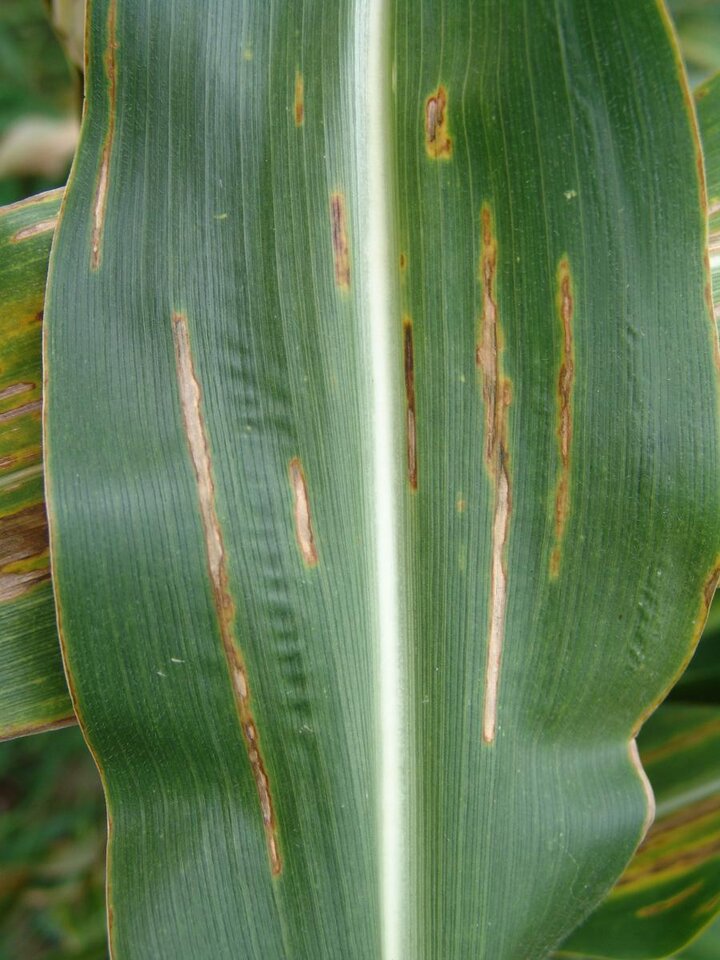
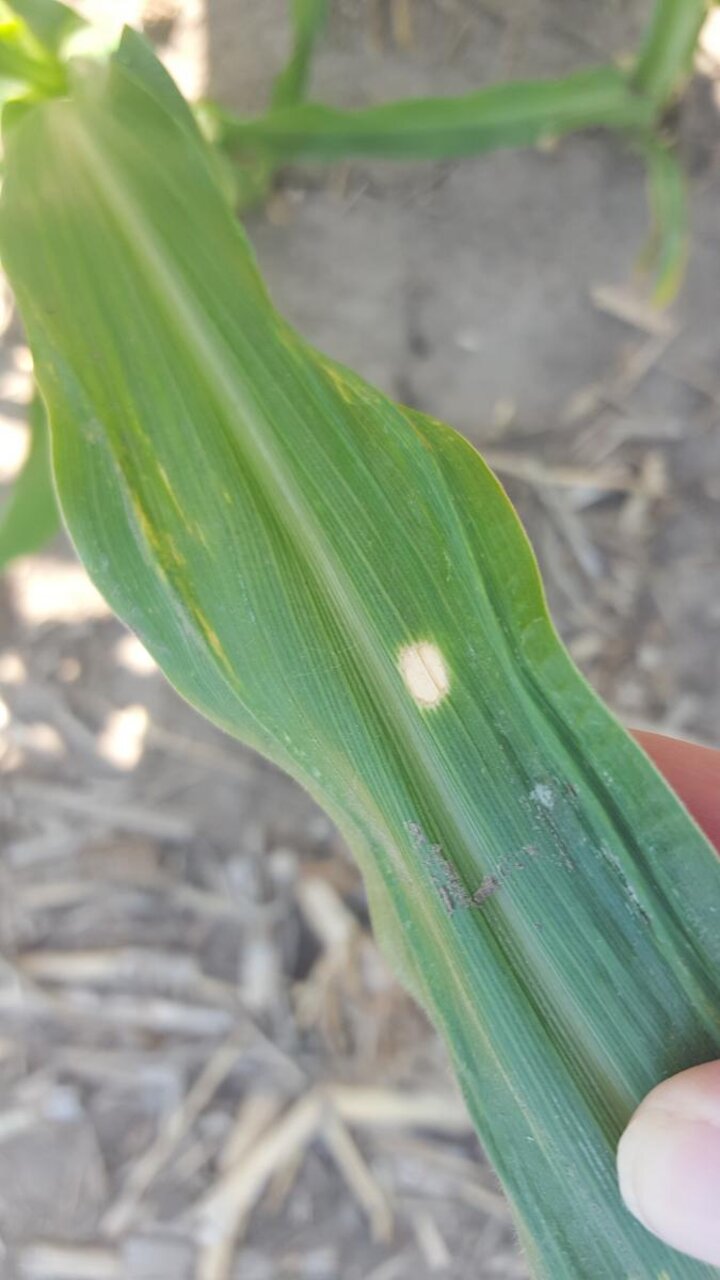
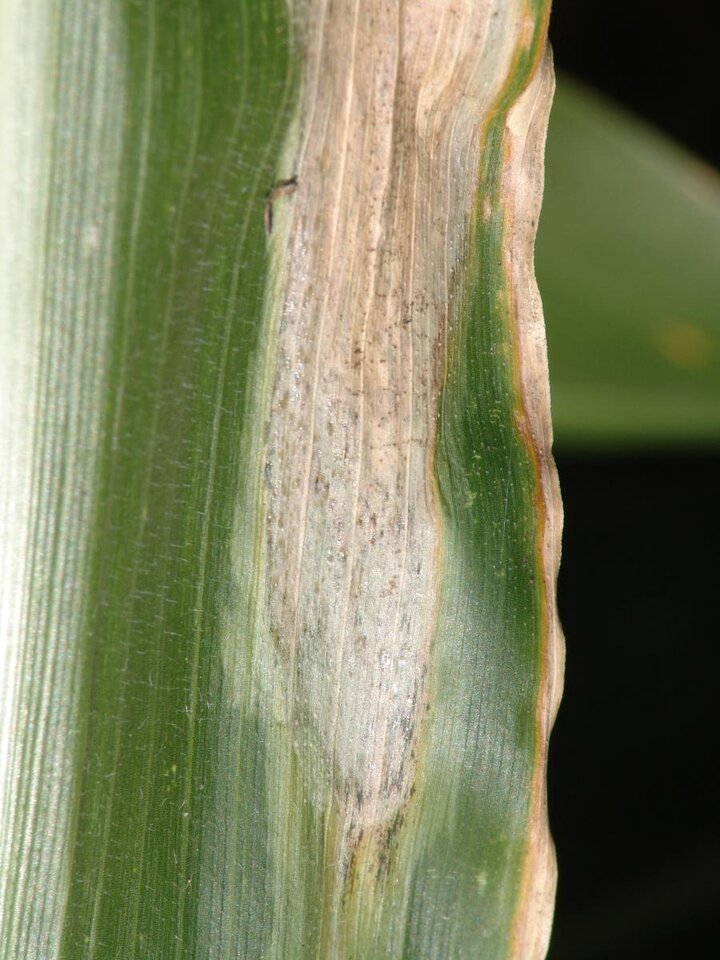
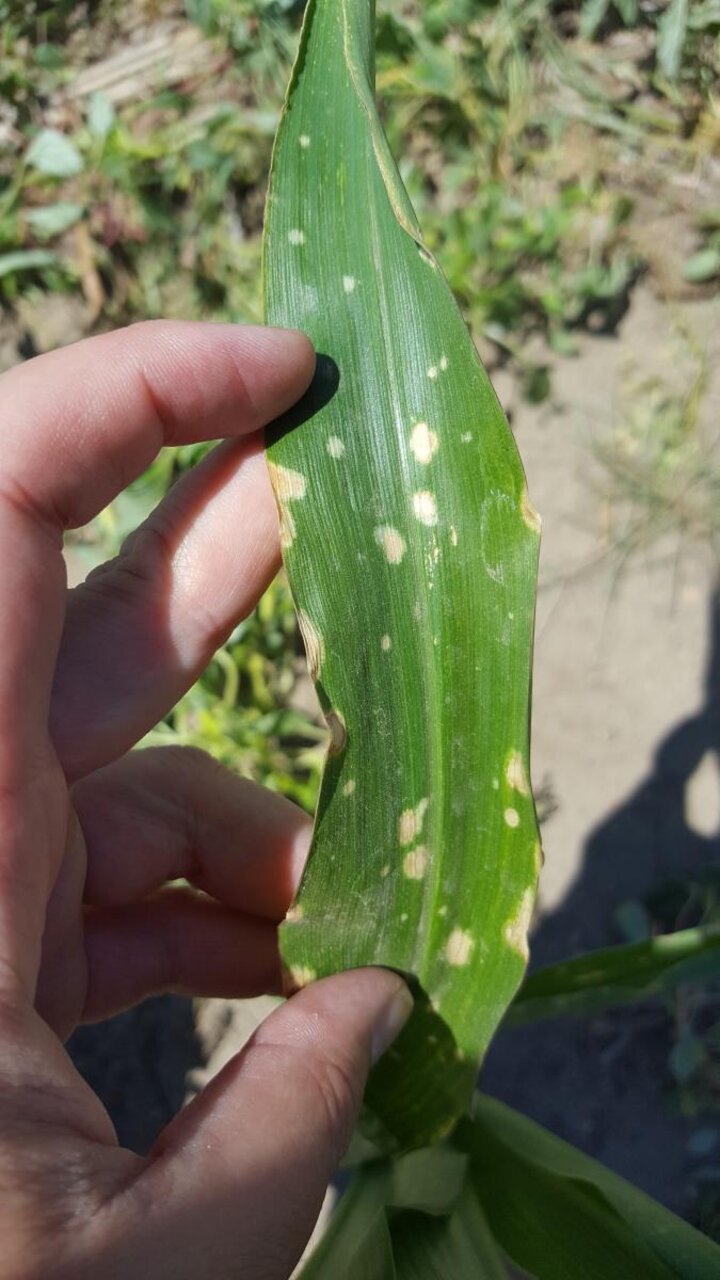
Fungal Diseases
Gray Leaf Spot (GLS)
GLS has been confirmed in a few locations in southern Nebraska. The rectangular gray lesions (Figure 4) caused by GLS begin on lower leaves and move up the plant with continued moisture and high relative humidity. Consider its severity and height on the plant (primarily its proximity to the ear leaf and above), as well as hybrid ratings, when making fungicide treatment decisions.
Common Rust
Brick-red to brown rust pustules can develop on the top or bottom leaf surfaces (Figure 5). The common rust fungus can grow well at lower temperatures than southern rust and so it is more common during the first half of the growing season (now). This can lead to confusion because of its similar appearance to the more yield-threatening southern rust that develops mid- to late-season.
Northern Corn Leaf Blight (NCLB)
The fungus causing NCLB prefers moist, cool conditions. The disease is most common in eastern Nebraska counties and occurs sporadically in central Nebraska. Large, cigar-shaped lesions can be one to several inches long (Figure 6). Susceptible hybrids can benefit from timely fungicide applications if disease becomes severe as it can lead to blighted leaves and yield loss.
Northern Corn Leaf Spot (NCLS)
NLCS, which causes oval to brown lesions on leaves or in the midribs, is rarely a serious problem in hybrid dent corn. However, it can be very serious in some susceptible inbred lines. In hybrids the disease is rarely severe enough to treat with fungicides; however, it may be necessary in some seed corn production.

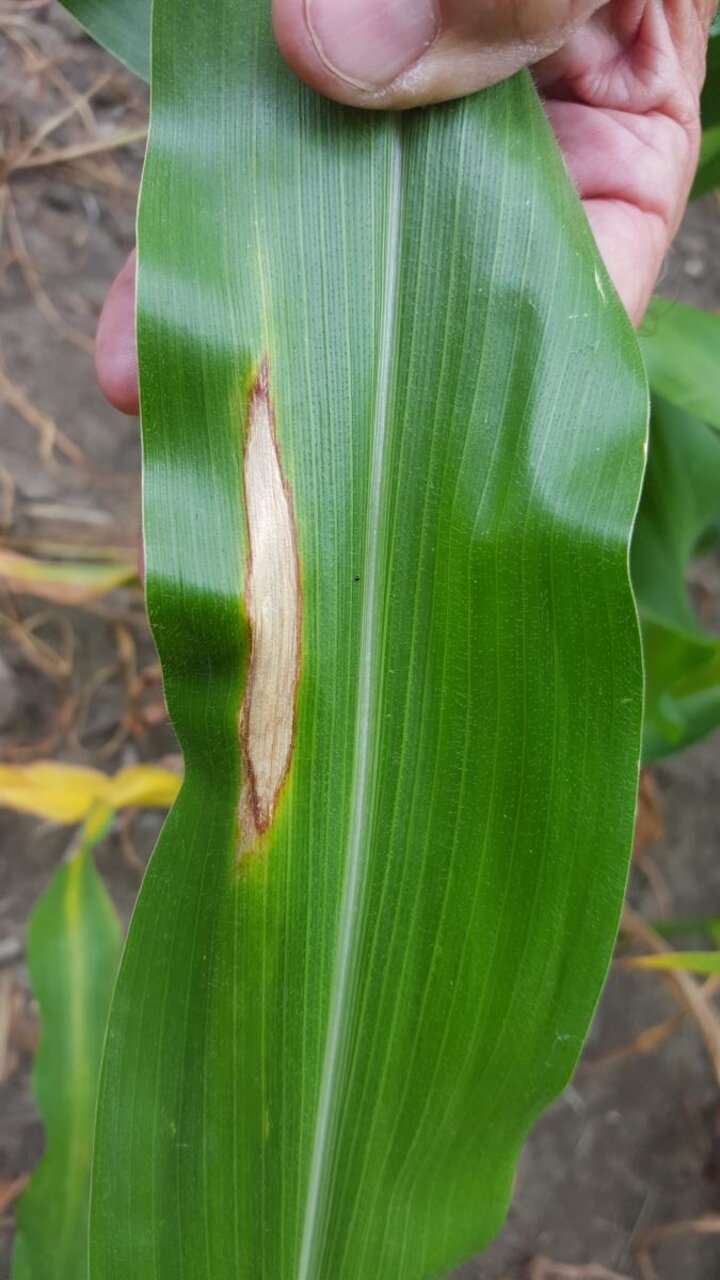
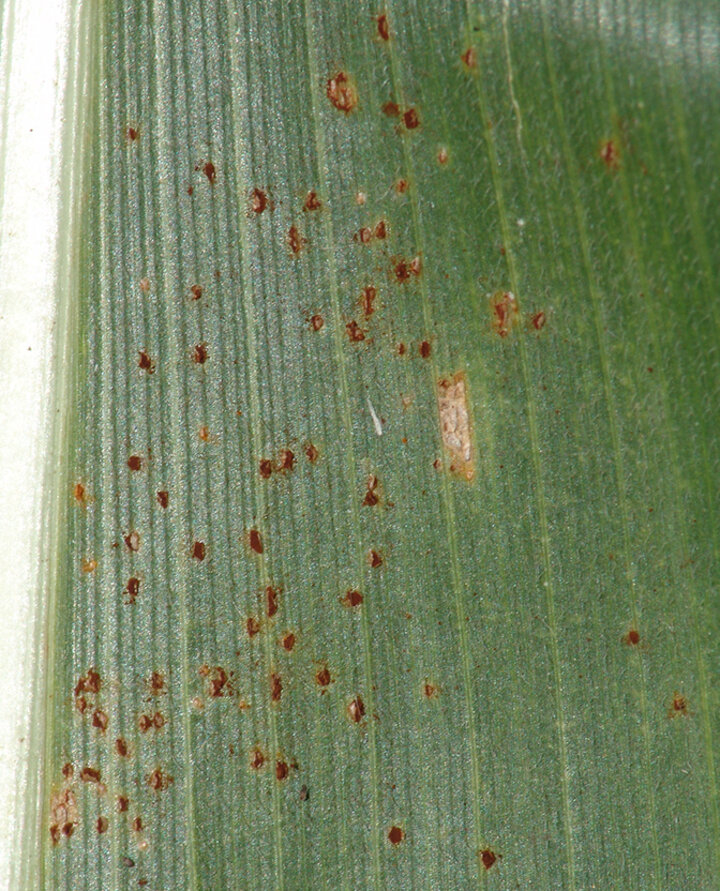

Physoderma Brown Spot
This disease is normally not severe, except on susceptible hybrids in wet conditions that favor infection. The yellow lesions on the leaf blade may be quite widespread across entire leaves or in bands (Figure 7). The pathogen requires standing water on plant parts, so lesions can develop in a banding pattern across the leaf after they emerge through the plant’s whorl during alternating wet/dry periods. Lesions may develop in both the midrib and on the leaf blade with appear very different. On the leaf blade, the small yellow/brown lesions may be alarming and appear similar to southern rust pustules, but they will lack the colored spores on the surface that can be wiped away. Lesions that develop in the midrib are often larger than those on the leaf blade and are usually black in color. Management of Physoderma brown spot is rarely necessary, although infection can be concentrated at a node, weakening it and leading to later stalk breakage.
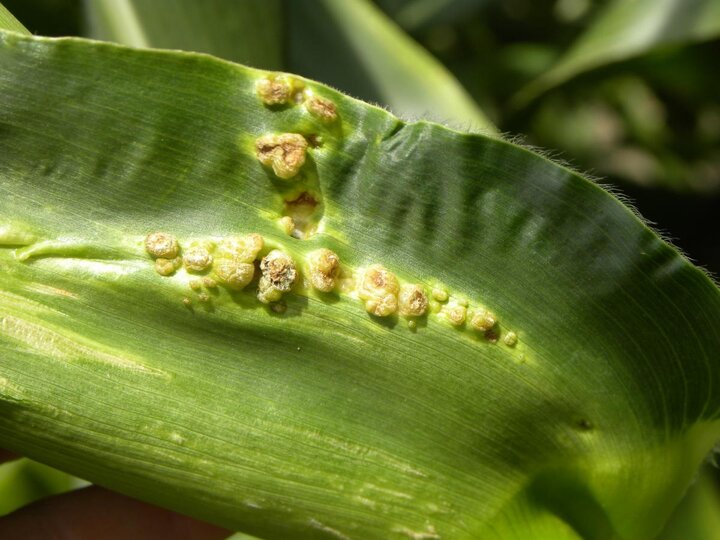

Common Smut
The common smut fungus is probably present in every field and infects corn through silks or wounds, such as those created by recent hail storms where the disease is developing now on leaves. The fleshy galls are smaller, wart-like and more difficult to recognize on leaves (Figure 8a), but can occur anywhere on the plant. Smut most commonly occurs on ears (Figure 8b). Fungicide treatments are not effective in controlling common smut.


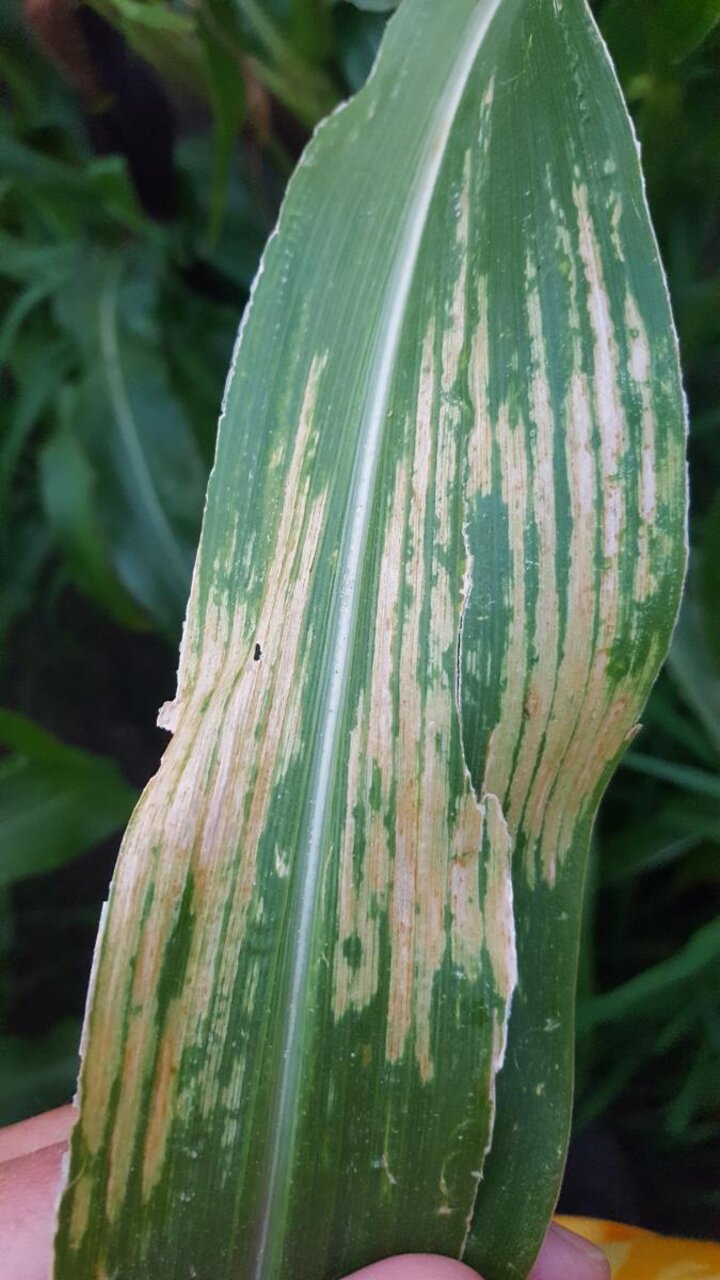

Figure 9. Symptoms of leaf scalding are common this year in corn that may have been damaged by strong winds during hot, dry conditions or bright sun on leaves emerging through wet whorls.
Abiotic Problems
Scald
Other symptoms have also been quite common in fields now, such as those caused by abiotic (non-living) causes. Many of these symptoms are consistent with scald or sunscald that can develop in some scenarios. For example, during dry soil conditions with high temperatures and high wind scalding can occur on leaves that first become discolored and then bleached (Figures 9a-d). The affected areas may look like patches of interveinal white striping, too, but lack any pathogens. Tassels may also be affected and loss of functional leaf area may result in more stalk rot later in the season in the same areas of the fields.
Sample Submission
Submit samples to the UNL Plant & Pest Diagnostic Clinic for help identify plant diseases if you are unsure. Click here for more information on how to submit a sample and the sample submissions form.
Once a disease has been identified, that information can be used to select seed for the next crop. Producers can work with seed company representatives to identify the best hybrids for their fields.
Further Resources
For more information on any of these diseases, visit the Plant Disease Management section of CropWatch, which includes disease and treatment information for the state’s leading crops. More information will be provided in later issues summarizing research results and ongoing projects focused on bacterial leaf streak.

